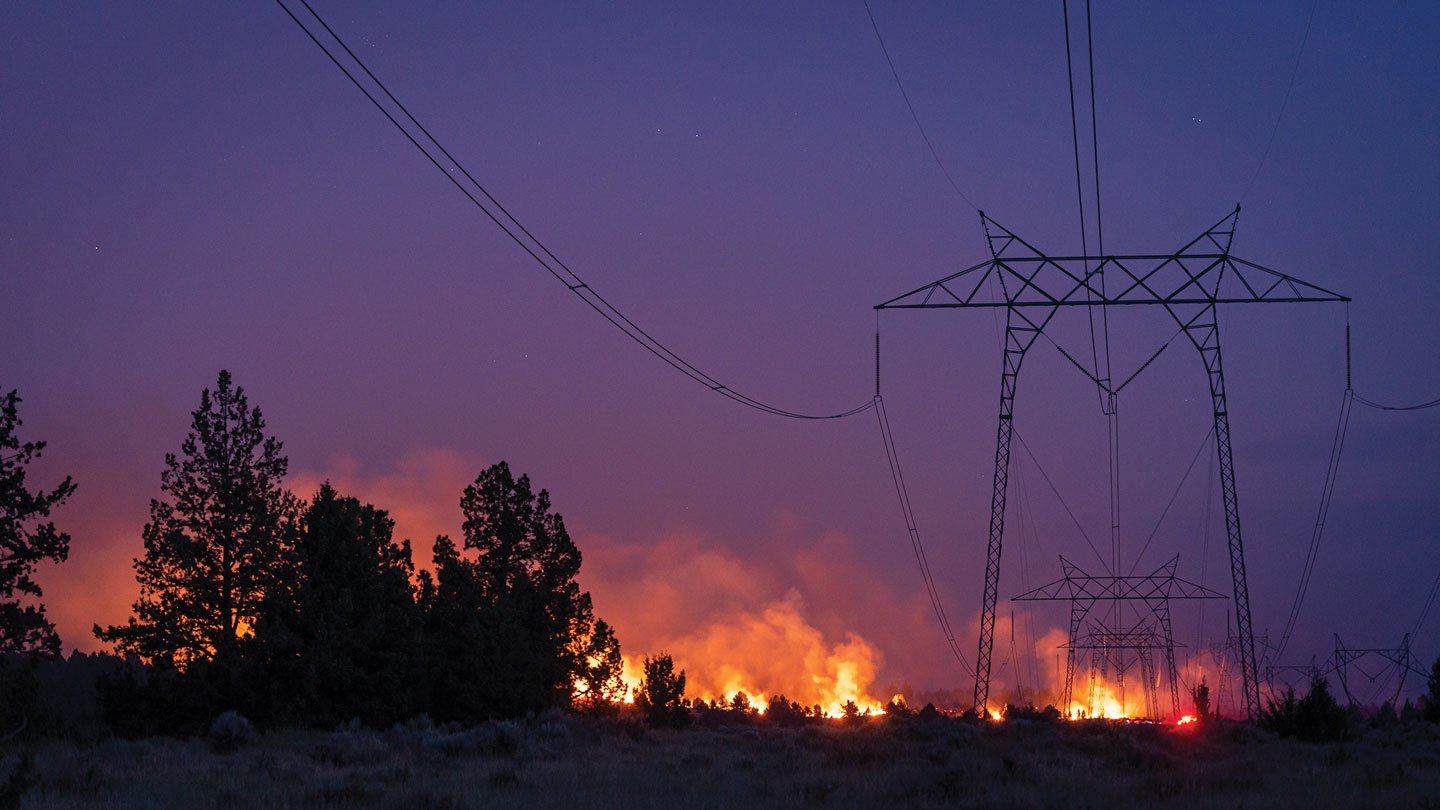
Enabling Resilient Real Estate Through Microgrids and Distributed Energy
The business case for microgrids is growing stronger.
In the past 10 years, power outage incidents in the U.S. increased by 64% over the previous decade, while power pricing has become increasingly volatile. Now, property developers and investors — and their tenants — face an urgent need to protect against growing energy risks with carbon-free, cost-effective and resilient power solutions. Microgrids are one of the best options available for mitigating power supply risks, increasing asset value and even creating revenue-generation opportunities.
Between extreme weather events, the excessive strain on local grids from electrification, and other infrastructure issues, the United States experiences more power outages than any other developed country. In 2020, the latest year for which data is available, the average U.S. electricity consumer experienced 20 more minutes of power interruptions than in 2017, the year with the previous record, according to the U.S. Energy Information Administration.
For U.S. property owners and occupiers, the need for a resilient power solution has never been more critical. Longer outages are an imminent threat as extreme weather events become more severe and frequent. Whether the property is a data center that relies on uninterrupted power to prevent data transmission loss or an industrial warehouse that needs to power an electric vehicle (EV) fleet, a microgrid can be tailored to fit the situation.
Defining a Microgrid
A microgrid is a localized power system comprising distributed energy resources such as solar arrays and energy storage batteries. Microgrids can be configured to draw power from renewable energy sources, reducing both carbon emissions and energy costs. As explained by Schneider Electric, microgrids “can operate … while connected to the utility grid or in disconnected ‘island’ mode.”
Thomas Edison created the first U.S. microgrid in 1882 when he developed an electricity station that initially served 82 customers through what would later evolve into the modern electrical grid. Despite that long history, 50% of the microgrids in the United States began operation only in the past five years.
The Microgrid Advantage
Having a resilient power source provides a form of insurance against extreme weather events and failures in the central grid, mitigating the risk of outages and associated opportunity costs. In the event of a power grid disruption, a microgrid can operate independently and continue supplying power to connected facilities.
With the global shift toward electrification, microgrids can provide building owners and users with additional electric energy for EV charging and reduce peak power demand and overall reliance on the utility grid. Furthermore, microgrids may bring efficiency gains, given that they minimize energy loss during transmission by generating electricity closer to the point of use.
Another benefit is integration with on-site renewable energy sources, thus reducing reliance on expensive grid electricity, decreasing overall energy costs and mitigating price volatility. A property with a microgrid power option can contribute toward decarbonization of the built environment and help occupiers advance their sustainability goals.
When Uninterrupted Power Is Critical
Microgrids are particularly relevant to data centers, hospitals, government agencies and other operations for which uninterrupted power is critical. Data centers, for example, consume 8% of the world’s electricity — and that volume is forecast to reach 3,200 terawatt hours by 2030, according to a 2021 Schneider Electric study.
The rapid expansion of the data center industry strains utilities, contributing to carbon emissions and power disruptions. Some European countries have gone so far as to severely limit data center development because of concerns about excessive energy demand. In the U.S., new data center sites have become scarce in California and parts of the Northeast because of concerns about grid capacity and the demand for power.

Compared with the prior decade, power outages in the United States have increased by 64% over the past 10 years. ehabaref via iStock/Getty Images Plus
Microgrids can help data centers become more resilient, reliable and sustainable, and open up location options without straining the traditional power grid. With the use of a demand-response program, data center operators can strategically shift power consumption away from the public utility during times of high demand and draw from the microgrid instead.
In addition, microgrids can help data center operators maximize energy efficiency. The tremendous heat generated by data center equipment can be repurposed for heating or cooling to increase overall energy efficiency.
Industrial Development Pressures
Fleet electrification will increase electricity demand throughout power distribution systems, with significant increases projected at public transit depots, logistics sites and other industrial properties. Globally, through the EV100 initiative, companies have committed to incorporating 5.75 million EVs by 2030 to prevent over 86 million tons of carbon dioxide emissions. In the next five years, electric transportation fleets will grow eight-fold in the United States alone, according to estimates from BloombergNEF.
As fleet electrification continues, warehouse tenants will increasingly expect their properties to have the EV charging infrastructure — and a reliable energy source — required to power their fleets. Power capacity will become a critical concern, especially given that EV charging demands often exceed the electricity consumption of the actual warehouse.
With a microgrid, a warehouse property can enable electric fleet charging at scale while increasing resilience and reducing the facility’s carbon footprint. As fleet size grows, the microgrid can be expanded to meet increasing energy needs.
Key Considerations for Microgrid Implementation
Microgrids are sophisticated infrastructure solutions that can require substantial investments. When making an investment decision, it’s crucial to define the complete value proposition of these technologies. The following are key issues to consider.
Energy resilience needs: Power outage risks are more acute in some areas than others. Accurately assessing the risk for a particular development requires a deep understanding of the business operational needs and the local utility’s reliability, available capacity and restoration capabilities. When occupiers require uninterrupted power, it’s worthwhile to invest in a property’s energy autonomy and emergency response capabilities.
Potential financial benefits: A microgrid can deliver a return on investment in the form of energy cost savings through government incentives, reduced reliance on the local grid and energy management strategies. In addition, a property owner may be able to increase the return by creating new revenue streams from selling excess energy back to the grid and offering energy-as-a-service or EV charging-as-a-service to nearby properties and enterprises.
The costs to build or implement a microgrid are primarily driven by new generation (e.g., solar, energy storage) and power distribution upgrades (e.g., automated switches, new interconnection). A new 10-megawatt microgrid may cost $15 million to $40 million-plus, depending on the energy sources.
Environmental benefits: If a microgrid incorporates renewable energy or low-carbon-emissions energy sources such as solar and wind or emerging sources such as biofuel, it can advance the decarbonization goals of the property owner and property occupants alike. In the future, more microgrids will leverage hydrogen and even small modular reactors.
Government incentives and regulatory implications: Numerous federal, state and local incentive programs are available to support microgrid development (see feature box below), but only some will be relevant to a specific property. Incentive programs, as well as regulations, can be complex and confusing, requiring a thoughtful investigation to understand the interplay of tax credits, grants, net metering, feed-in tariffs and other mechanisms that affect the financial viability and return on investment of creating a microgrid.
Retaining Long-term Asset Value
Resilient facilities are becoming increasingly valuable to occupiers and property investors, especially as extreme weather and increased usage threaten grid reliability. However, a microgrid is not a “set it and forget it” investment. It must be continually operated and maintained with a sophisticated set of capabilities to maximize the impact of the investment. Additionally, microgrids can be updated with new technologies related to renewable energy generation and storage, energy management and smart grids.
Microgrids are poised to become a common feature in the built environment of the future. In the long term, microgrids will increase the value of many commercial properties by contributing to energy savings, decarbonization and resiliency advances, which are valued by property investors and corporate occupiers alike.
Doug Mackenzie is vice president of energy resilience at JLL. Paulina Torres is research manager, sustainability and ESG, for JLL. Elsa Wilson is a senior analyst, research, at JLL.
Supporting Data CentersCompanies are actively exploring micronuclear power sources for their data centers. Although initially considered as backup power options, they have the potential to become primary power sources. Microsoft is integrating a biofuel-powered microgrid into its data center in San Jose, California, for backup power. The project will deliver California’s largest renewable natural gas microgrid, enable operational continuity for the data center, and advance Microsoft’s progress toward its target of becoming carbon negative by 2030. To develop the project, Microsoft is partnering with Enchanted Rock, a leading provider of microgrids. “We expect this project will demonstrate that large-scale, reliable and cost-effective backup generation with net-zero carbon can become the new standard,” said Enchanted Rock CEO Thomas McAndrew. According to Enchanted Rock, the project will reduce local emissions by up to 96% compared to alternatives. |
Incentive ProgramsMany established or developing incentive programs to support the development of microgrids are being offered across all levels of government in the United States. At the federal level, the landmark U.S. climate bill, the Inflation Reduction Act of 2022, offers sizable incentives in the form of tax credits and grants for microgrids that will reduce installation costs and drive overall system growth in the country. In October 2023, the U.S. Department of Energy announced $3.5 billion in funding for grid resilience and microgrid solutions as part of the Bipartisan Infrastructure Law. With this announcement, the government will support the deployment of more than 400 separate microgrids nationwide. Through this funding, the state of Louisiana has secured $250 million for microgrids, with total investment of nearly $500 million, to push community-driven energy strategies and resilience hubs. |




